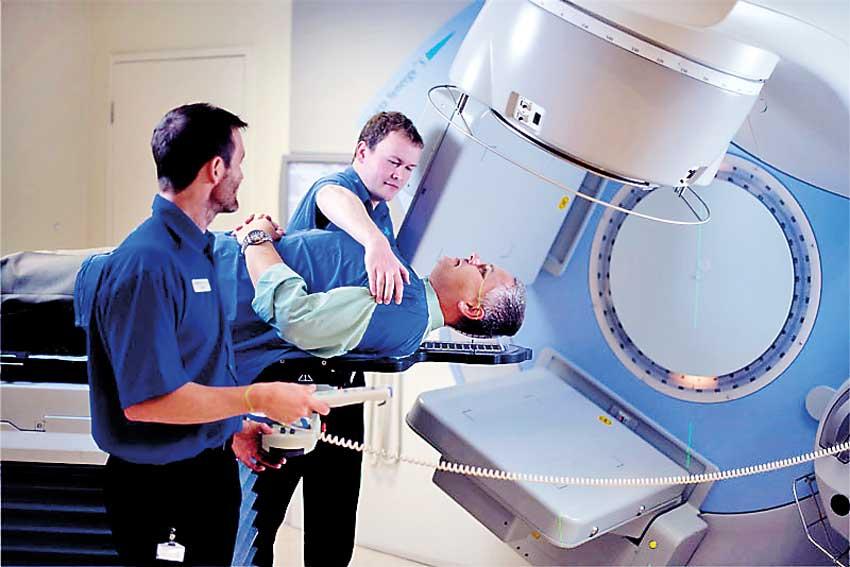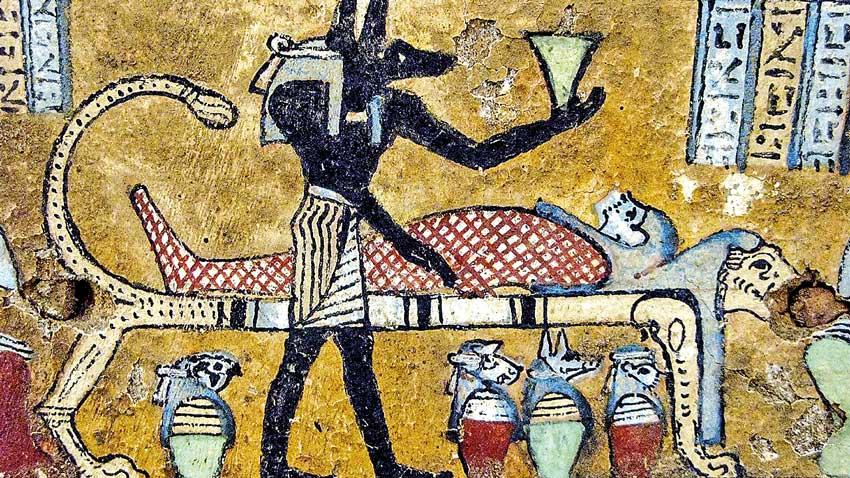09 Aug 2019 - {{hitsCtrl.values.hits}}

 Hippocrates is considered the Father of Modern Medicine, but when looking back, the practice of medicine runs back to the beginning of civilization itself. Almost every tribe had its medicine man, or a shaman, performing healing rituals unique to each community. These rituals varied from applying various poultices for ailments to the offering of tributes to the deities to cure the people of illnesses and plagues.
Hippocrates is considered the Father of Modern Medicine, but when looking back, the practice of medicine runs back to the beginning of civilization itself. Almost every tribe had its medicine man, or a shaman, performing healing rituals unique to each community. These rituals varied from applying various poultices for ailments to the offering of tributes to the deities to cure the people of illnesses and plagues.

Cancer has a long history. While people must have died of cancer since the beginning of times, it was Hippocrates himself who described the condition and gave it the name karkinos (carcinos), meaning ‘crab’ in Greek. It was because the gross appearance of a cut tumor, with an abundance of blood vessels invading the surrounding tissue, resembled a crab spreading its many legs. Historians have found several mummified bodies preserved by Egyptians a several thousand years earlier, carrying evidence suggesting that the owners of bodies passed away due to cancer.
The treatment for cancer on earlier days mainly consisted of diet and laxatives. In addition, a practice called ‘blood letting’ was performed on patients, which included draining away of ‘bad’ blood using leeches or knives.
Today, the cancer treatments have improved immeasurably, especially thanks to the advancement in the field of cancer research. But some of the earlier roots still continue in to the present when treating cancer. Vincristine, a famous lifesaving drug used in treating cancers of the blood, is in fact made from the extracts of the plant Catharanthus roseus, which is commonly referred to as ‘Mini mal’ in Sri Lanka.
Some of these cancers occur in the younger population, principally due to genetic mutations occurred at birth, while a majority of cancers occur in the older population
Cancer in understandable terms
Usually, the cells in the body are maintained under a strict set of rules. They have specific rates of growth and after a certain time, when the cells are older and their functions are failing, the body destroys these and a new group of cells are regenerated to carry out the functions of the cells.
A cancer cell is a cell which goes against the body’s rules due to a defect in its genetic material. These cells grow in size and number at an uncontrollable rate, invading surrounding tissue when they run out of space to grow. This causes an increased requirement of energy and nutrients and therefore in growing, cancer cells deprive other cells of nutrients. These cells, once dislodged, can travel through blood and lymph to other distant tissues and start multiplying, spreading the cancer throughout the body. This process is called metastasis, and can interfere with vital bodily functions. Usually, these invasions kill a patient if the condition is untreated.

There is a scientific reason for every symptom that a patient suffering from cancer undergoes. Certain chemicals released to the bloodstream by cancer cells can cause loss of appetite in many cancers. In addition, cancer cells obstructing the lumen of the tube-like digestive tract will also cause digestive symptoms like vomiting, constipation and blood in stools.
Once the bone marrow is infiltrated by cancer cells, this causes a reduction in the blood cell production. This would in turn cause anaemia and make the patient susceptible to infection due to ineffective production of white blood cells which fight pathogens entering the body. Similarly, invasion of the brain by cancer cells would cause frequent loss of consciousness and seizures as well as loss of important brain functions.
Challenges during cancer treatment
The biggest challenge when it comes to treatment of cancer is the wide variety of cancers in existence. For an example all brain cancer cells don’t have the same cancer. Because of the wide variety of cells available in the body, there are hundreds of different cancers. Some of these cancers occur in the younger population, principally due to genetic mutations occurred at birth, while a majority of cancers occur in the older population.
Another reason that makes treatment of cancer a challenge is that, unlike in the case of parasites, infectious agents etc. which cause ailments by invading the body from outside, cancer cells are the body’s own cells. Thus, a chemical that can harm a cancer cell has the potential to harm other normal cells in the body too. Scientists have found a solution to this problem by making drugs targeting only the fast growing cells in the body, since cancer cells grow faster than any other cells. As hair root cells are also fast growing cells, these drugs can affect the hair cells too, making hair loss a side effect of many chemotherapeutic drugs.
Popular treatment options
Due to its wide variety of the properties, a wide range of treatment options are needed for successful treatment. Surgery, Chemotherapy and radiotherapy are some of the most popular treatments when it comes to cancer.
Since cancer is usually an uncontrolled growth in the form of a tumour, it is logical to think that surgery should be able to get rid of every cancer, right? While surgery plays an immense role in cancer treatment, unfortunately, it alone cannot cure cancer in many cases.
Scientists have found a solution to this problem by making drugs targeting only the fast growing cells in the body, since cancer cells grow faster than any other cells
Radiotherapy, where cancer cells are directly exposed to beams of energy rays, gradually destroying them, and chemotherapy, where a medication hindering the growth of cancer cells are administered to the patient are two other popular methods of cancer treatment. All these treatment methods are used either together or alone in the treatment of cancer.

In the case of terminal cancers where the cancer is too advanced for treatment, medication to reduce the rate of the growth of cancer as well as to keep the patient as comfortable and pain-free as possible, providing him with dignity and extended time with his family, is provided. Ongoing cancer research
Annually millions of US dollars is spent on discovering new methods to treat cancer. Hundreds of scientists around the world are working on exciting new discoveries about cancer cells and focused therapy. Using immunoglobulin which bind to a specific receptor on the surface of the cancer cell, disabling its function and using of nano robots which deliver drugs directly to the target cells, minimising the side effects are some such exciting fields of cancer research.
Thus is the evolution of the treatment of cancer treatment from witch doctoring to what it is today. Still, despite all these discoveries thousands of patients succumb to cancer every year. Will there come a day, due to the advancements in the field of medicine, when all cancers become completely curable and ‘cancer’ ceases to become such a devastating term? Only time will tell.
(The writer is a pre-intern medical graduate (MBBS) from the Faculty of Medicine, University of Kelaniya).
22 Dec 2024 11 minute ago
21 Dec 2024 21 Dec 2024
21 Dec 2024 21 Dec 2024
21 Dec 2024 21 Dec 2024
21 Dec 2024 21 Dec 2024